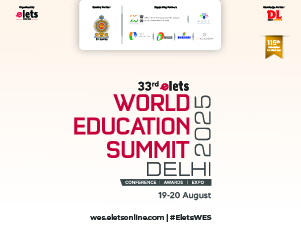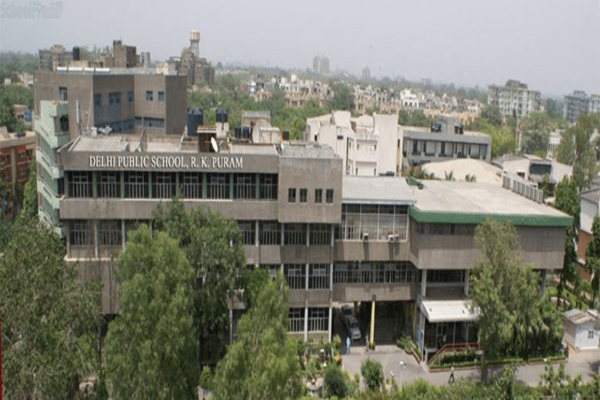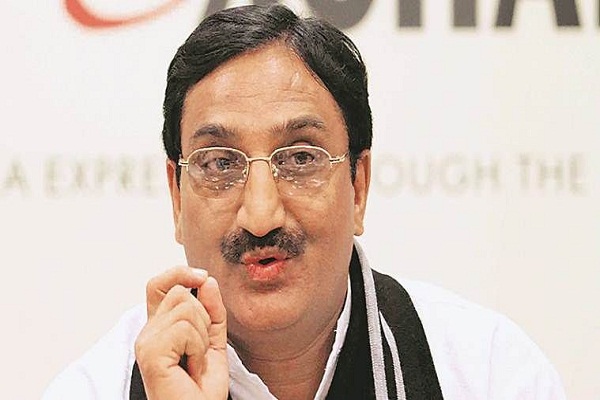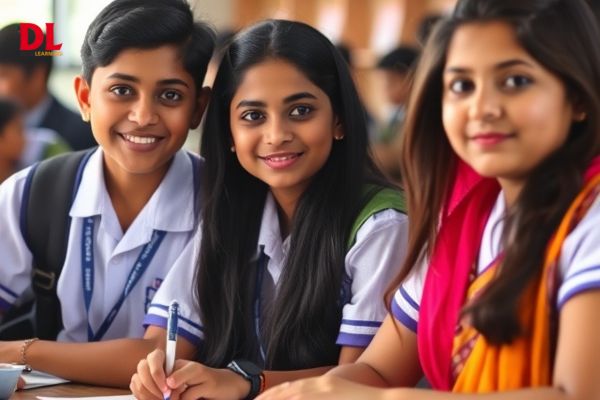
Education has been a pillar of societal progress and a catalyst for national transformation for generations. On National Education Day, observed every year on November 11, India commemorates the legacy of Maulana Abul Kalam Azad, the country’s first Education Minister, whose vision laid the foundation for India’s educational philosophy. In an era where global challenges and rapid technological shifts shape the future of work and life, India’s education sector stands as a beacon of potential, innovation, and reform.
Since independence, India has made strides toward creating a strong foundation for educational access and equity. Key milestones, such as the 86th Amendment to the Constitution through Article 21-A, ensure free and compulsory education for children between the ages of six and fourteen. This legal mandate, reinforced by the Right to Education (RTE) Act of 2009, which came into effect on April 1, 2010, envisions an educational system that meets national standards and serves as a cornerstone for inclusivity.
Building an Inclusive, Forward-Looking Education System
Over recent years, the Government of India has implemented transformative policies and initiatives aimed at creating an inclusive, accessible, and quality-driven educational framework. Through legal mandates and targeted programs, India is paving the way for every child, regardless of background, to access learning opportunities that can change their futures and shape the nation’s trajectory.
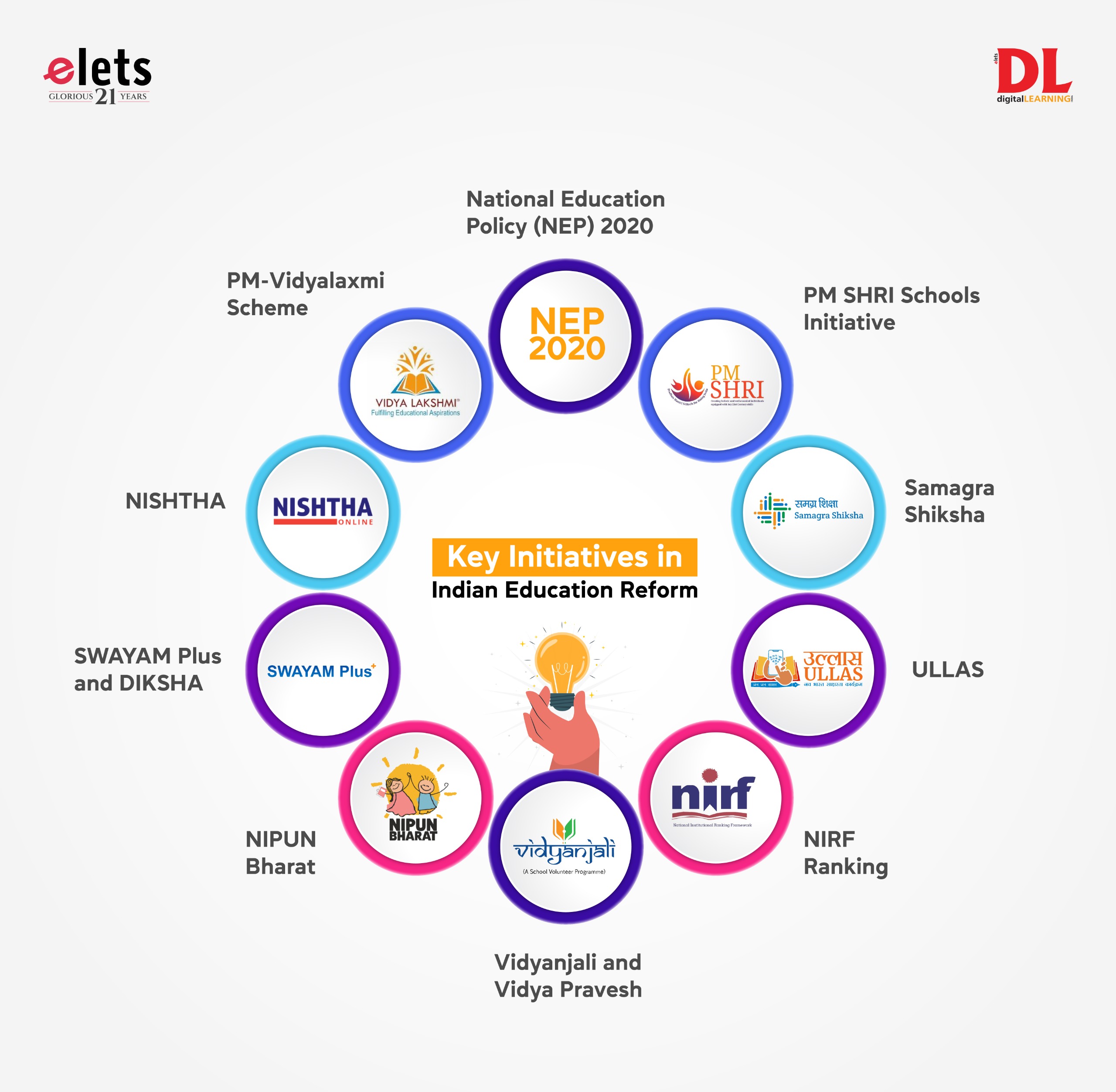 Key Initiatives in Indian Education Reform:
Key Initiatives in Indian Education Reform:
1. National Education Policy (NEP) 2020
The National Education Policy 2020 represents one of the most significant overhauls in India’s educational landscape in decades. Approved in July 2020, NEP 2020 reimagines education with a future-facing, flexible curriculum that emphasizes critical thinking, experiential learning, and digital literacy. By aligning education with global standards, the NEP aims to equip students with the skills needed to thrive in the 21st century.
2. PM SHRI Schools Initiative
Through the PM Schools for Rising India (PM SHRI) initiative, launched in 2022, India seeks to upgrade over 14,500 schools across the country. These institutions will serve as model schools, demonstrating the core principles of NEP 2020, such as cognitive development, creative thinking, and value-based education. With a projected budget of ₹27,360 crore over five years, PM SHRI will lay the groundwork for future-ready education.
3. Samagra Shiksha
Recognizing the diversity of India’s population, Samagra Shiksha, launched in 2021, aims to create inclusive classroom environments that address students’ unique needs across all regions and backgrounds. By fostering holistic development, this initiative ensures that no child is left behind in the journey toward educational empowerment.
4. ULLAS
Literacy is a stepping stone to empowerment, and ULLAS, launched for 2022-2027, extends educational opportunities to adults who missed out on formal schooling. Also known as Nav Bharat Saaksharta Karyakram (New India Literacy Programme – NILP), this program aligns with NEP 2020’s objectives and enables individuals aged 15 and above to engage with foundational learning, contributing actively to their communities and the economy.
5. NIPUN Bharat
Launched in 2021, NIPUN Bharat focuses on foundational literacy and numeracy, aiming to ensure every child achieves basic reading and math skills by Grade 3. This program addresses the essential learning requirements of young students, building a strong foundation for lifelong education.
6. Vidyanjali and Vidya Pravesh
Vidyanjali promotes volunteerism and community participation in education, connecting schools with local supporters and industry leaders. Vidya Pravesh, on the other hand, provides a playful, welcoming introduction to formal education for Grade-I children, emphasizing joy and curiosity as the first steps in learning.
7. SWAYAM Plus and DIKSHA
Digital platforms like SWAYAM Plus and DIKSHA exemplify India’s focus on integrating technology with education. SWAYAM Plus, launched in 2024, enhances higher education by enabling credit recognition for industry-relevant courses, while DIKSHA empowers teachers with access to training resources, encouraging professional growth and innovation in classrooms.
8. NISHTHA
The NISHTHA initiative, started in 2019, is a comprehensive teacher training program that has evolved to meet current demands through online platforms like DIKSHA. With its recent expansion into secondary education, NISHTHA strengthens the backbone of the educational system – teachers – by fostering leadership and continuous professional development.
9. NIRF Ranking
The National Institutional Ranking Framework (NIRF), launched by the Ministry of Education in September 2015, marked a pivotal step toward enhancing the quality and accessibility of higher education in India. NIRF introduced a structured and transparent system for assessing and ranking universities, colleges, and other institutions, fostering healthy competition and encouraging improvements in education and infrastructure.
10. PM-Vidyalaxmi Scheme
The Union Cabinet, led by Prime Minister Narendra Modi, has approved the PM-Vidyalaxmi scheme to support meritorious students by providing financial assistance for quality higher education. This scheme offers education loans for students admitted to the top 860 institutions across India, benefiting over 22 lakh students each year. With a budget allocation of ₹3,600 crore from 2024-25 to 2030-31, the scheme aims to assist an additional seven lakh students. Implemented through a fully digital, transparent, and student-centric platform, PM-Vidyalaxmi ensures easy access and smooth interoperability for students nationwide.
Investing in Education: The Foundation of Progress
India’s 2024-25 budget underscores the country’s commitment to strengthening education infrastructure. With an allocation of ₹73,498 crore for the Department of School Education & Literacy, the budget reflects a 19.56% increase from the previous fiscal year. Furthermore, historic investments in autonomous bodies, including ₹9,302 crore for Kendriya Vidyalayas and ₹5,800 crore for Navodaya Vidyalayas, highlight a focus on excellence and inclusivity within the public education system.
In higher education, the increased allocation to the Department of Higher Education (₹47,619.77 crore for FY 2024-25) demonstrates a balanced approach that supports both broad-based educational access and targeted skill-building initiatives. The PM-Vidyalaxmi scheme, for instance, provides financial assistance to meritorious students, ensuring that economic barriers do not obstruct access to premier institutions.
Encouraging Growth and Inclusivity: Insights from AISHE 2021-22
The All India Survey on Higher Education (AISHE) for 2021-22 reveals promising trends, with rising enrollment in higher education, particularly among female students. The Gender Parity Index (GPI) for higher education has achieved a milestone of 1.01, indicating a near-equal representation of male and female students. Enrollment in STEM disciplines and the rise of minority representation illustrate the diversity and dynamism that now characterize Indian education.
Towards a Future of Innovation and Inclusivity
As India commemorates National Education Day 2024, the nation stands united in its pursuit of a comprehensive, inclusive, and globally competitive education system. From primary to higher education, from literacy programs to advanced digital platforms, each initiative reflects the determination to ensure that every child, youth, and adult has access to learning and growth opportunities.









